
The Mastiff also called the English Mastiff is a breed of large dog.
Mastiffs are very gentle companions and family protectors that lack aggression, making them lovely family pets.
These courageous yet well-mannered dogs can do well in most households. You don’t need a huge home to have this giant dog, but you do need a little extra space (especially because of the long tail).
Sadly, like other giant dog breeds, the lifespan of the Mastiff tends to be shorter than the average dog. The average lifespan of the Mastiff is 6 to 12 years.

According to the American Kennel Club, male mastiffs must stand at least 76 cm (30 inches) and females at least 70 cm (27.5 inches). The breed weighs 75 to 84 kg (165 to 185 pounds).
Color, as specified by the breed standard, is apricot, silver fawn, or brindled fawn and black. Ears and muzzle are dark.
The mastiff has a short coat that typically needs little more than routine grooming.
Like all dogs, proper training and socialization are both important for the mastiff. This is especially crucial because of the giant size of this breed.
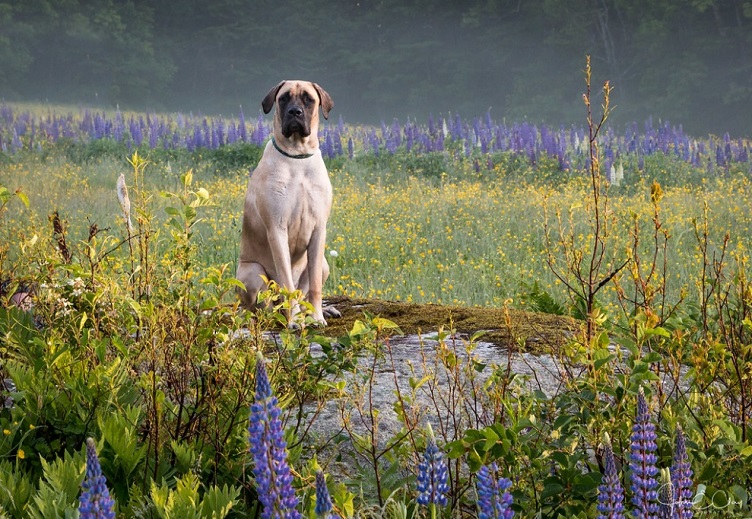
The mastiff-type dog is used as a guard and fighting dog in England for more than 2,000 years.
Dogs of this type are found in European and Asian records dating back to 3000 BC.
There is a ceramic and paint sculpture of a mastiff-like dog from Mesopotamia region during the Kassite period (mid-2nd millennium BC).
Sometimes called the Molossian breeds for a common ancestor, numerous large, heavily built dog breeds incorporate the name mastiff.
Certainly an element in the formation of the English Mastiff was the Pugnaces Britanniae that existed at the time of the Roman conquest of Britain.
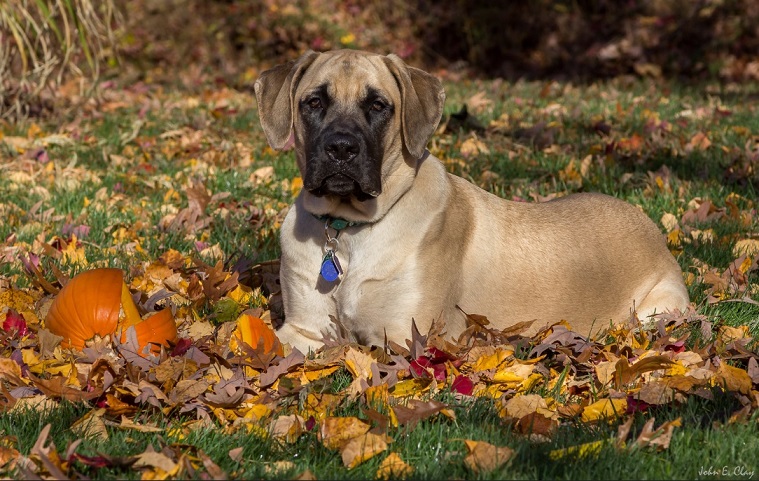
As far as the origin of the Pugnaces Britanniae is concerned, there is unproven speculation that they were descended from dogs brought to Britain by the Phoenicians in the 6th century BC. This breed’s first written
accounts in England date back to 55 BC when Caesar noted them during his invasions. Many were sent to Italy and in the Roman Empire they became fighting dogs.
The Alaunt is likely to have been another genetic predecessor to the English Mastiff. Introduced by the Normans, these dogs were developed by the Alans, who had migrated into France (then known as Gaul) due to pressure by the Huns at the start of the 5th century. Intriguingly they were known from the Romans to live in a region (the Pontic-Caspian Steppe) about 700 km to the north of the region where the Assyrians once lived. Again, any canine connections are speculative.
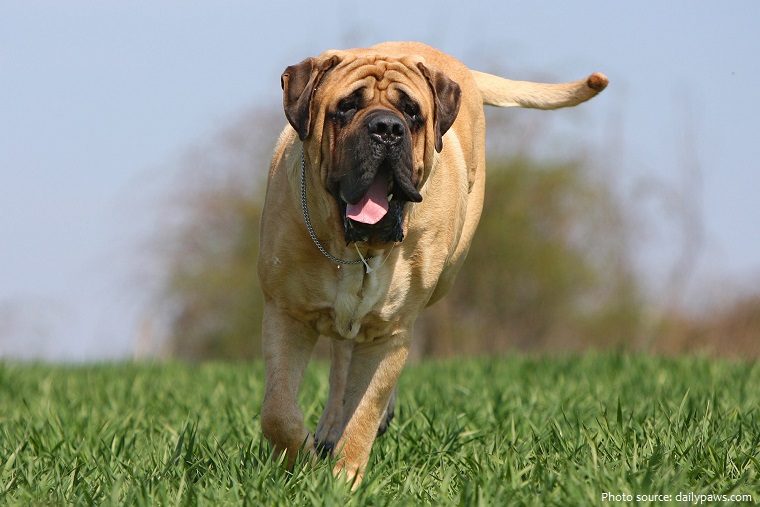
The Roman invaders of England sent mastiff-like dogs to compete in the arenas of ancient Rome, where the dog was pitted against bears, lions, tigers, bulls, other dogs, and human gladiators.
The breed also fought in the later bullbaiting and bearbaiting rings of England.
The turn-of-the-millennium Greek historian Strabo reported that dogs were exported from Britain for the purpose of game hunting, and that these dogs were also used by the Celts as war dogs.
When in 1415 Sir Peers Legh was wounded in the Battle of Agincourt, his Mastiff stood over and protected him for many hours through the battle. The Mastiff was later returned to Legh’s home and was the foundation of the Lyme Hall Mastiffs. Five centuries later this pedigree figured prominently in founding the modern breed.

In 1835, the Parliament of the United Kingdom implemented an Act called the Cruelty to Animals Act 1835, which prohibited the baiting of animals. This may have led to decline in the aggressive Mastiffs used for this purpose, but Mastiffs continued to be used as guards for country estates and town businesses.
Mastiffs might have been brought to the United States over 200 years ago, but they were not officially recognized by the American Kennel Club (AKC) until the late 1800s.
In 1918, a dog called Beowulf, bred in Canada from British imports Priam of Wingfied and Parkgate Duchess, was registered by the American Kennel Club, starting a slow re-establishment of the breed in North America.
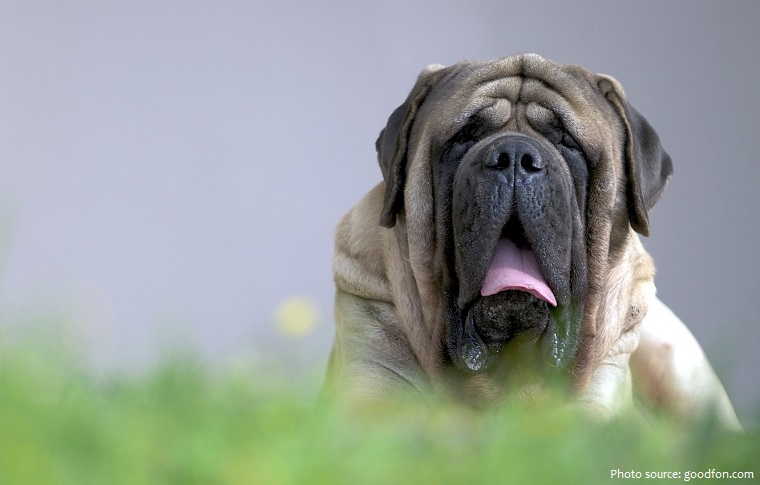
At the end of World War II, England stood victorious but depleted. It was estimated that only 14 Mastiffs survived in the entire country. The Mastiff population was rebuilt with the help of U.S. breeders who exported specimens from good British stock back to the mother country. Today’s Mastiff is more docile and friendly than his ancient forebears, but no less courageous.
Usually, the average price of a English Mastiff puppy from a reputable breeder is between $1,000 and $2,000, while a top-quality Mastiff puppy can cost as high as $3,500 and upward. Their price depends upon the pup’s age, sex, quality, pedigree, and breeder’s location.
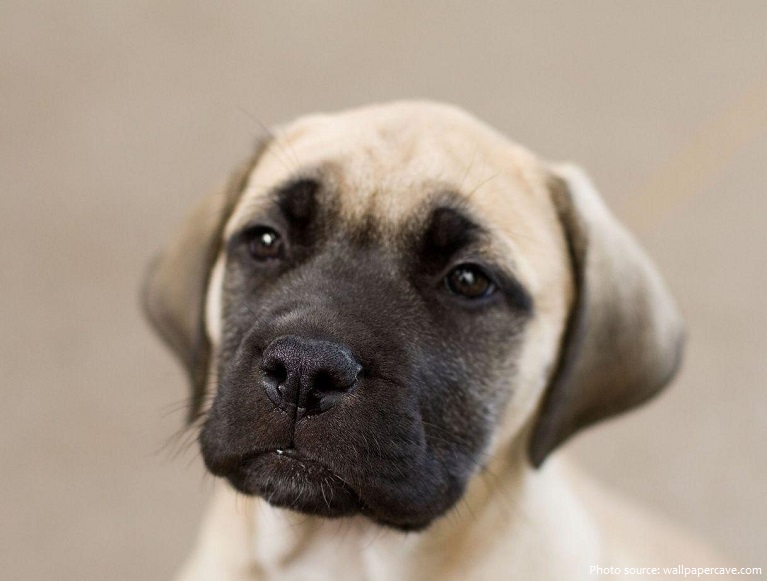
The linguistic origin of the name “Mastiff” is unclear. Many claim that it evolved from the Anglo-Saxon word “masty”, meaning “powerful”. Other sources, such as the Oxford English Dictionary, say the word originated from the Old French word mastin – Modern French mâtin.
The first list of dog breed names in the English language, contained within The Book of Saint Albans, published in 1465, includes “Mastiff “.
The greatest weight ever recorded for a dog, 155.6 kg (343 pounds), was that of an English Mastiff from England named Aicama Zorba of La Susa, although claims of larger dogs, including Saint Bernards, Tibetan Mastiffs, and Caucasian ovcharkas exist. According to the 1989 edition of the Guinness Book of Records, in March 1989, when he was 7 years old, Zorba stood 37 inches (94 cm) at the shoulder and was 251 cm (8 ft 3 in) from the tip of his nose to the tip of his tail, about the size of a small donkey. After 2000, the Guinness Book of World Records stopped accepting largest or heaviest pet records.